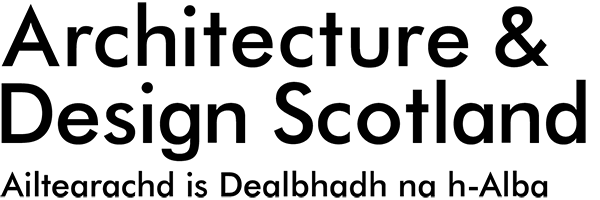Discover how inclusive and accessible design can transform learning spaces. This page presents three digital publications, derived from varied user experiences, that highlight the challenges and opportunities in creating inclusive and accessible learning environments. Our collaboration with the Craighalbert Centre, the Scottish Centre for Children with Motor Impairments, showcases a holistic design approach that benefits every learner.
These publications aim to inspire and inform, providing insights directly from individuals with lived experiences of additional needs. If you are a professional from Scotland's Learning Estate, an architect, or a designer passionate about creating inclusive and accessible learning environments, this resource is for you. Ultimately, our goal is to prove that inclusive design benefits everyone, leading to learning environments that simply work better for all children.
Included on this page
Inclusive and accessible design ideas for learning spaces
Understand the impact of inclusive and accessible design in learning environments by exploring the animations below, which spotlight user perspectives. These design considerations come directly from workshops and interviews with Additional Support Needs (ASN) users and providers, as well as valuable site visits to ASN schools and centres.
Morning arrival or external approach
This animation illustrates how design can improve parents' and carers' morning arrival at learning facilities by focusing on reducing arrival stress and facilitating quick staff interactions. By incorporating clearly marked entrance areas and with convenient buggy storage, the design creates an inviting atmosphere and a safer drop-off experience.
Note: For the best viewing experience, watch the video in full screen. Closing the full-screen view will keep you on this page.
Why is design important in arrival or entrance areas?
"I know exactly where I'm going!"
"We don't have to take his chair across the busy car park."
An audio-only version of the animation can be found below.
Arrival routine through reception
This animation showcases how thoughtful design can transform the morning arrival routine or reception for children with additional needs. The aim is to foster inclusion to enable children to engage in the same activities as their peers.
Installing adjustable hooks for coats means they can be repositioned for specific users and incorporate therapeutic movements to enhance therapeutic support. This allows for greater independence, as it will enable pupils to hang their own coats without assistance.
Note: For the best viewing experience, watch the video in full screen. Closing the full-screen view will keep you on this page.
Why is design important in the reception area of your learning environment?
"I can quickly chat to the teachers and carers now."
"I can hang up my own jacket with my friends."
An audio-only version of the animation can be found below.
Floor-based playtime
This animation demonstrates how thoughtful design can transform floor-based playtime into a more positive experience for all users. The intent is to create a flexible and integrated classroom concept with clear zones for various types of play, integrated storage solutions, and an emphasis on natural light and materials.
This design aims to foster inclusive play, minimising the need for additional support or separation. Even small adjustments to floor-based play can significantly improve inclusivity in early years settings.
Note: For the best viewing experience, watch the video in full screen. Closing the full-screen view will keep you on this page.
Why is design important in floor-based play areas?
"We're able to store more stuff here."
"We can play together!"
An audio only version of the animation can be found below.
Outdoor playtime
This animation illustrates how design can enhance outdoor playtime for all users.
By creating covered external areas, accessible equipment storage, and carefully considered thresholds and pathways, the intent is to enable nature-based outdoor learning and play, regardless of weather conditions.
Note: For the best viewing experience, watch the video in full screen. Closing the full-screen view will keep you on this page.
Why is design important for outdoor play areas?
"I can get all the way outside by myself!"
An audio-only version of the animation can be found below.
Quiet or rest time
This animation demonstrates how thoughtful design can enhance quiet or rest time for children with additional support needs, as well as staff and carers.
The intent is to create flexible nooks and quiet corners that offer a chance to regroup. Recognising that fully open-plan classrooms can be noisy, and that separated spaces can lead to isolation, these adaptable zones provide a calm environment and facilitate easy tidying.
Note: For the best viewing experience, watch the video in full screen. Closing the full-screen view will keep you on this page.
Why is design important in quiet or rest time areas?
"It's easier to tidy and organise the place."
"We're close enough to keep an eye on the children."
An audio only version of the animation can be found below.
Activity or focus time
This animation illustrates how design can enhance activity or focus time by creating multi-purpose spaces that integrate sensory therapy and 1:1 support.
Unlike open-plan layouts or separate rooms that require children to leave the classroom entirely, this design demonstrates a flexible sensory area used for individual therapy within the main learning environment. This approach prevents the child receiving therapy from feeling isolated, whilst normalising such support for their classmates.
Note: For the best viewing experience, watch the video in full screen. Closing the full-screen view will keep you on this page.
Why is design important in activity or focus areas?
"We have a quiet time whenever we need."
"I don't have to go away to a room by myself."
An audio only version of the animation can be found below.

User experience informs better design
This publication was developed using observations and interviews with individuals at the Craighalbert Centre, these contrasting experiences reveal how diverse emotional and physical needs require different spatial considerations.
Read below for more information and to download the 'User experience informs better design: scenarios of a day in the life' publication.
Scenarios of a day in the life
To understand the impact of different needs on spatial design, this exercise presents a 'day in the life' comparison between two imagined personas: Ruaridh, a wheelchair user and Ailsa, a child with no additional needs. Working with Thea McMillan, an inclusive design consultant, we explored how the children might use the space throughout the day, from arrival and morning play to activity time and going home. This approach can help consider spatial needs for young children with additional support needs. Instead of specifying every space, it helps us create a holistic understanding of what children might require.
This download explores how experiences shape the needs of a building, and aims to open up discussions about how design should respond to the needs of the user. In any new project, take the time to understand the diverse range of people who will interact with your space. By envisioning their journey throughout a typical day, you can proactively identify where their needs may arise and design experiences that effectively address them.
Pattern language: exploring spatial ideas for inclusive design
Developed by Fraser/Livingstone Architects as part of the learning from the Craighalbert feasibility study, this guide champions the design of learning spaces that prioritise the health, wellbeing, and happiness of all children, regardless of their physical capabilities. It is intended to complement technical advice found in the Scottish Care Inspectorate’s Design Guidance ‘Space to Grow and Thrive' and others.
Important note
This resource outlines principles to consider, rather than guidance. When we refer to inclusive and accessible approaches, this is very much in reference to our learning from the Craighalbert project and an additional supported needs (ASN) basis. There are many other factors and users to consider and collaborate with in creating fully inclusive spaces.
We hope to further expand these resources for the learning estate, and we are eager to develop further projects and case studies to deliver this form of support.
Further resources
This webpage forms part of a suite of resources. Additional webpages can be accessed through these links, which explore Designing for Inclusive and Accessible Learning Environments and Key Principles for Inclusive and Accessible Learning Environments.
To find out more about our work on designing for the Learning Estate, click here.
Acknowledgements
We would like to thank all our contributors for this resource, including all the staff and pupils from The Craighalbert Centre, Fraser Livingstone Architects, Rankin Fraser Landscape Architects, Thea McMillan, Education Scotland and their National Complex Needs Network, and Andrew Wyness.
